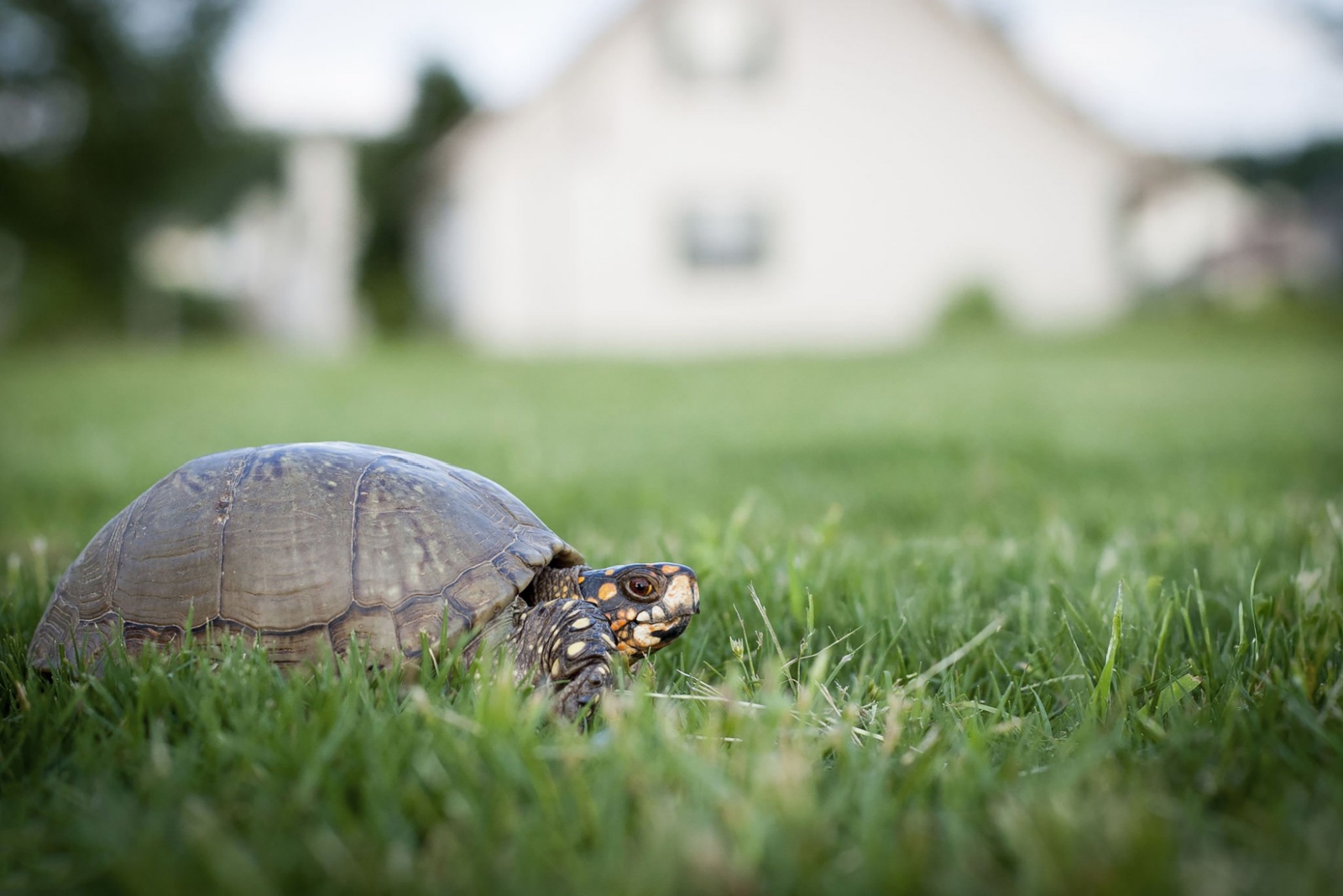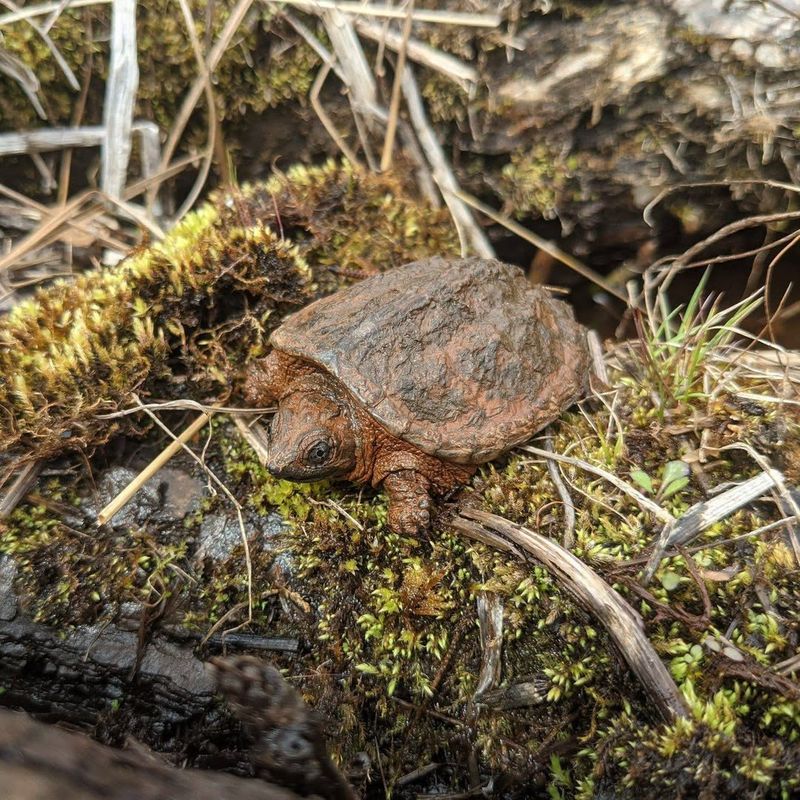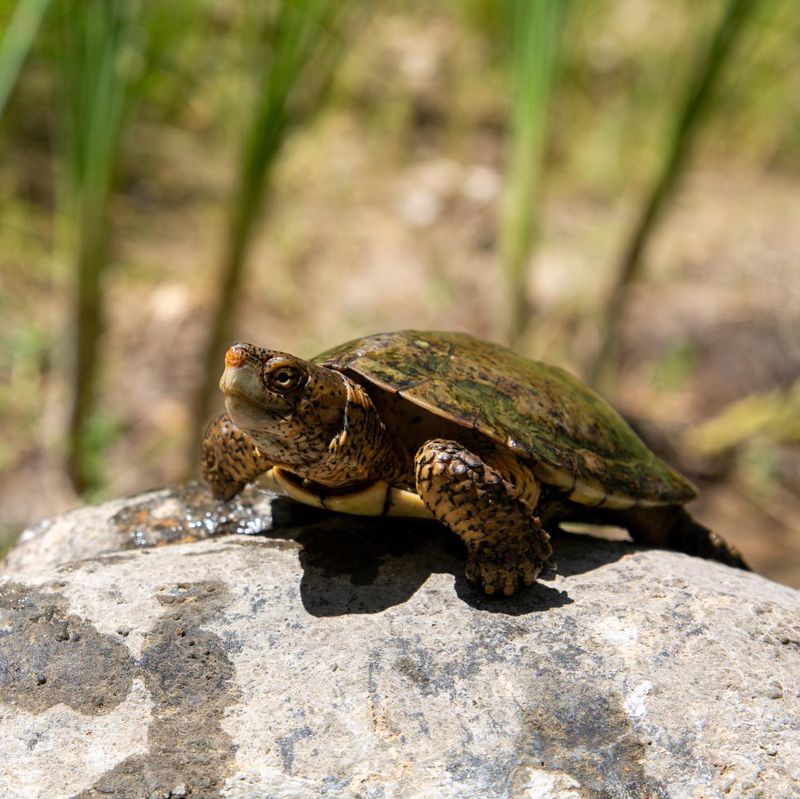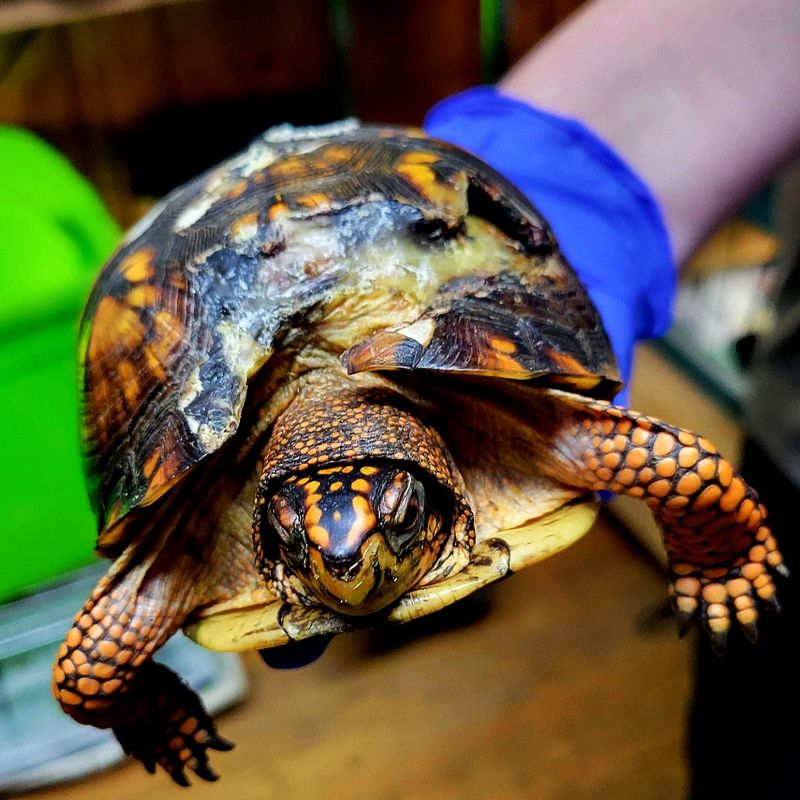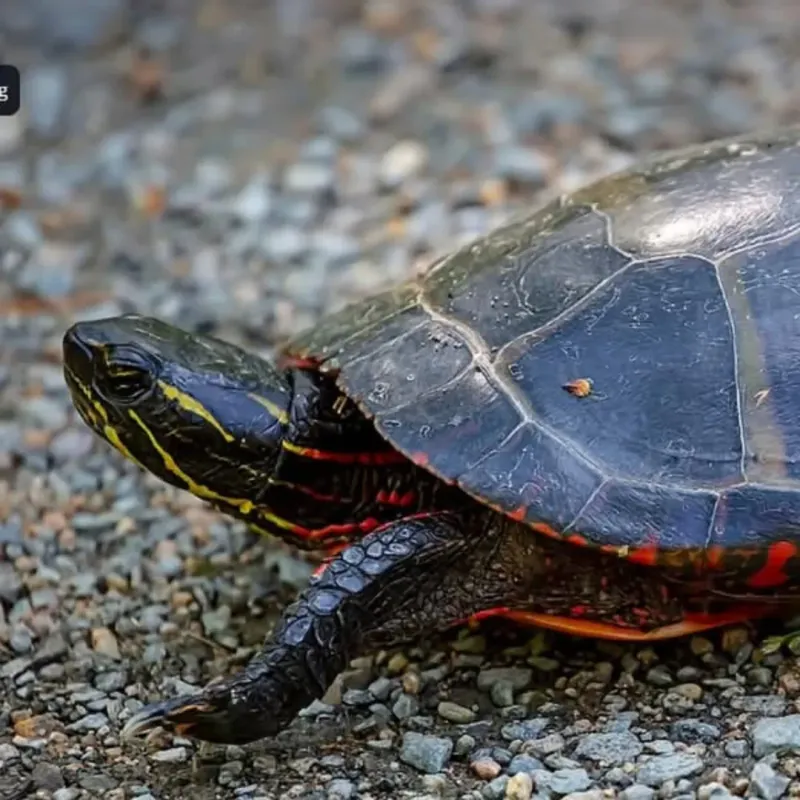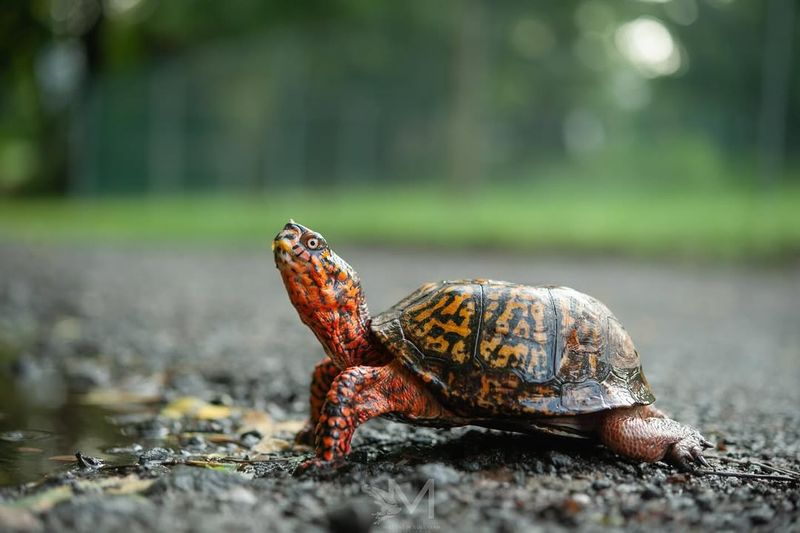When a turtle shows up in your California yard, it’s not just a slow surprise—it’s nature knocking on your back gate. But before you scoop it up or snap a selfie, take a breath and think twice. Not every shell you see belongs in your garden, and sometimes helping means leaving well enough alone.
From desert wanderers to wayward pets, here are 8 smart moves that’ll keep both you and your unexpected guest out of hot water.
1. Keep Your Distance And Observe Quietly
Wild turtles can feel stressed when humans get too close. Give the turtle plenty of space so it feels safe enough to move naturally. Watch from at least six to ten feet away if possible.
Sudden movements or loud noises might scare it into hiding inside its shell. Patient observation lets you identify the species and understand what the turtle might be doing in your California yard, whether it’s just passing through or searching for something specific.
2. Identify Whether It’s A Native Species
California has native turtles like the Western Pond Turtle, which is actually threatened. Knowing if your visitor belongs here helps you make better decisions. Look at the shell shape, color patterns, and size.
Native turtles deserve extra protection and care. If you spot a red-eared slider with distinctive red markings near its ears, that’s likely an abandoned pet, not a native species. Taking photos from different angles helps with identification later if you need expert advice.
3. Check If The Turtle Appears Injured
Carefully look for signs of injury without touching the turtle yet. Cracks in the shell, bleeding, visible wounds, or difficulty moving could mean the turtle needs medical help. Sometimes turtles get hurt by cars, lawn mowers, or predators.
An injured turtle often acts differently than a healthy one, moving slowly or staying motionless for extended periods. If you notice any concerning symptoms, contact a California wildlife rehabilitation center right away for professional guidance on next steps.
4. Provide Fresh Water In A Shallow Container
Turtles traveling through neighborhoods often need hydration, especially during California’s hot, dry summers. Place a shallow dish or pan with clean water near the turtle, but not directly in its path. Make sure the water depth stays under two inches.
Deep water can actually be dangerous for some turtle species. The turtle might drink or soak to cool down and rehydrate. Leave the container out for several hours, giving your visitor time to use it.
5. Keep Pets And Children Away Temporarily
Dogs and cats might see turtles as toys or threats, which creates dangerous situations for everyone involved. Curious children might want to touch or pick up the turtle, potentially getting bitten. Turtles have surprisingly strong jaws and quick reflexes when defending themselves.
Explain to kids why watching from afar is better than handling wildlife. Keep pets indoors or in a different part of the yard until the turtle leaves naturally. This protects both your family and the turtle.
6. Create A Safe Exit Path
Turtles sometimes get trapped in fenced yards or behind obstacles they cannot climb over. Look around your California property for the easiest way the turtle can leave safely. Remove temporary barriers like garden tools, toys, or lawn furniture blocking potential routes.
If your fence goes all the way to the ground, you might need to open a gate. Guide the turtle gently toward the exit using a long stick or broom, never your hands. Natural habitat like nearby ponds or creeks makes the best destination.
7. Contact Local Wildlife Authorities If Needed
Some situations require professional help beyond what homeowners can provide. If the turtle appears sick, injured, or stuck somewhere dangerous, reach out to California Department of Fish and Wildlife or a local wildlife rehabilitation center. They have trained staff who know proper handling techniques.
Threatened species like the Western Pond Turtle receive special legal protections. Experts can relocate turtles safely when necessary, ensuring they end up in appropriate habitats where they can thrive long-term without human interference.
8. Never Relocate The Turtle Yourself
Moving turtles to random locations, even ones that seem perfect, often does more harm than good. Turtles have home territories they know well, with familiar food sources and shelter spots. Dropping them somewhere new leaves them confused and vulnerable.
Female turtles return to specific nesting sites year after year. Relocating them disrupts important breeding patterns. Unless the turtle faces immediate danger like being on a busy road, let it continue its journey naturally. California wildlife experts should handle any necessary relocations following proper protocols.

